We don’t often think about protecting fruit and orchard trees when we are putting our gardens and perennials to bed for the winter, but if your trees are on the younger side, it’s a good idea to give them some extra protection. Even for older fruit trees, it can’t hurt.
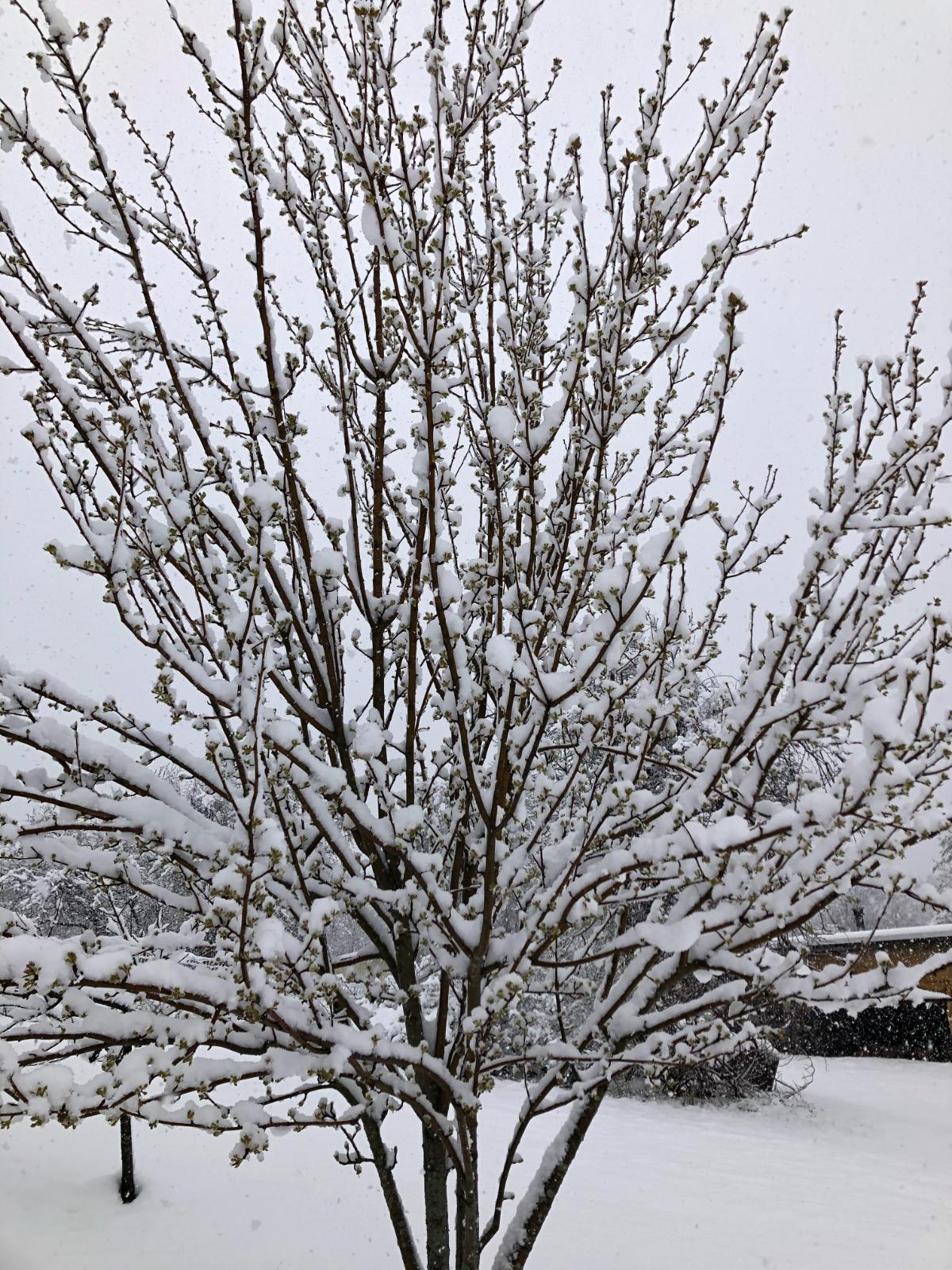
What fruit trees need winter protection? What should you do to protect them?
Jump to:
- How Young is Young? What Fruit Trees Should Be Protected
- Protect Young Fruit Tree Trunks from Chewing Pests
- Winter Mulch Young Fruit and Orchard Trees
- Why Mulch Fruit Trees for Winter?
- When to Apply Winter Mulch to Fruit Trees
- How to Mulch Young Orchard Trees for Winter
- What Type of Mulch Should You Use for Winter Mulch for Fruit Trees
- When Spring Really Does Arrive
- Reduce and Pull Back Bark Mulch in the Spring
- Remove Hardware Cloth Wraps
- Other Young Trees and Marginally Hardy Trees Can Benefit from the Same Treatment
How Young is Young? What Fruit Trees Should Be Protected
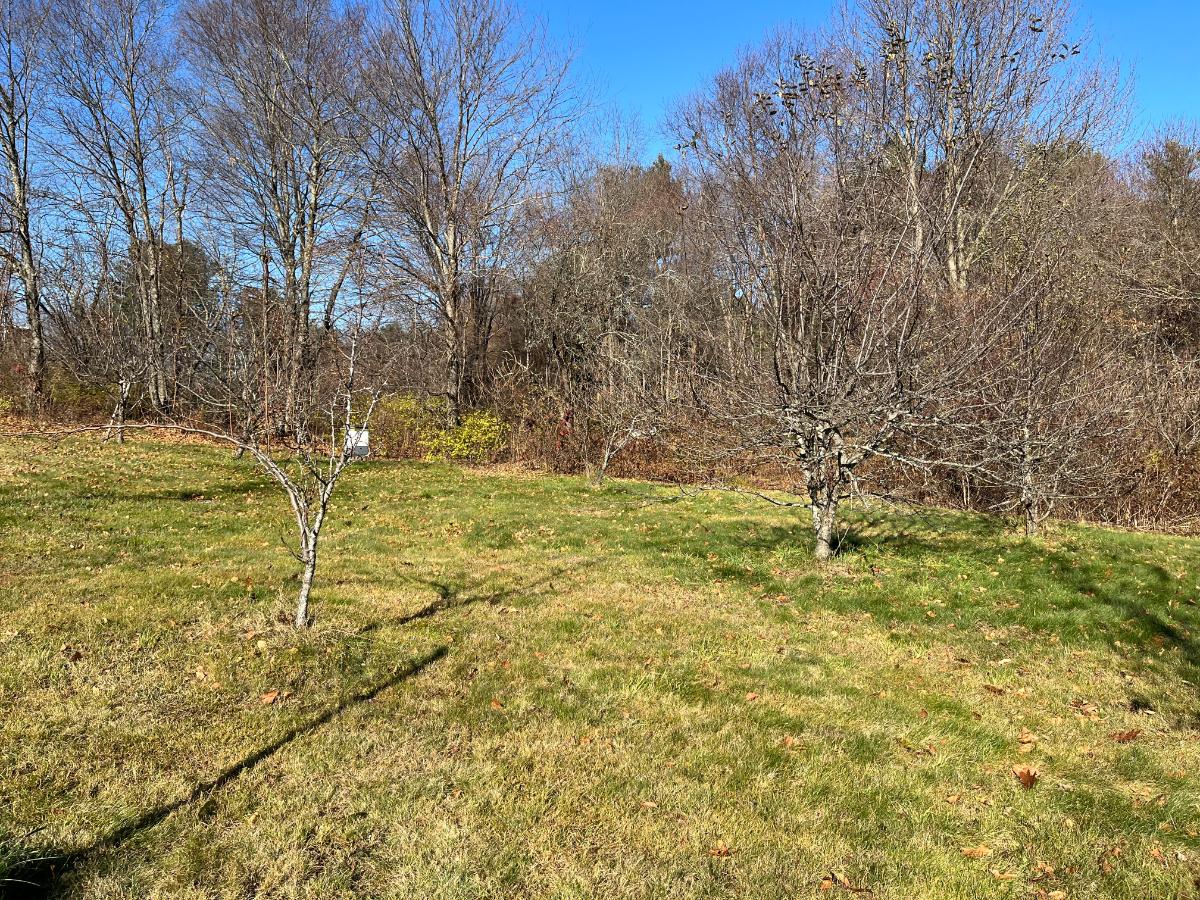
Any orchard trees that are still becoming established should be given some extra protection over winter.
Small, immature fruit tree roots can be heaved up out of the ground if you experience periods of freezing and thawing. This process also compacts the soil. It’s worst when it happens repeatedly over the winter, which is more and more common these days.
Larger, older trees with bigger, better, and deeper root systems are not at as much of a risk of exposure.
You should definitely take pains to protect any newly planted fruit trees. Give extra protection to those planted this year. If you have trees you just planted in the fall, winter mulch is an absolute must.
The University of Wisconsin considers a “newly planted tree” to be any tree that was planted within the last five years. So, they recommend mulching and precautions be taken for all trees that are five years old or younger.
There are two main things you should do.
Protect Young Fruit Tree Trunks from Chewing Pests
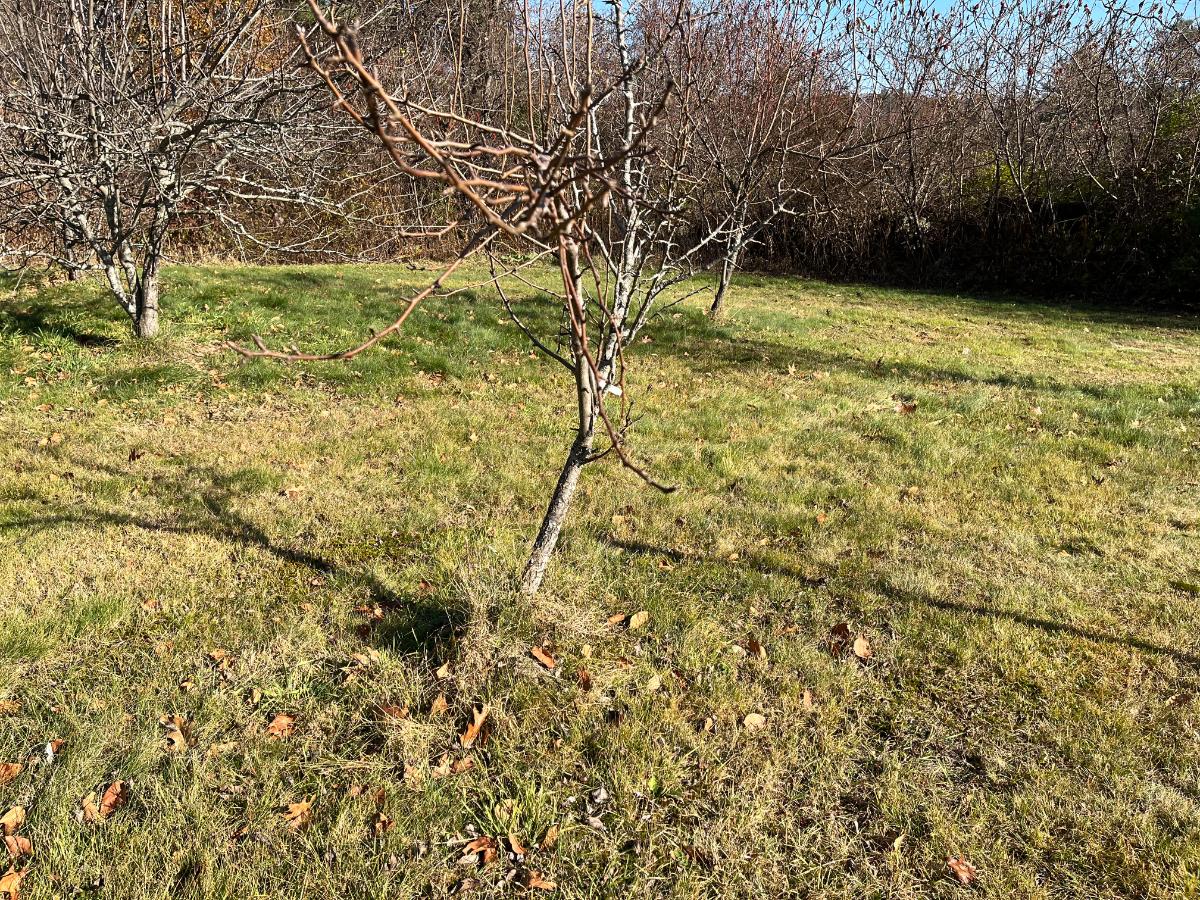
Mice, rats, and other chewing rodents like to chew on fruit trees. To them, the bark tastes good. They will seek them out even more in years when there is longer, deeper snow cover and when other food sources are scarce.
Bark is, of course, the delivery system for food and water for the trees. When bark is damaged, there can be significant damage to the tree. If the bark is chewed or cut all the way around, the tree becomes naturally girdled, and this will result in the death of the tree.
Before you do anything else, first protect the trunks of your trees. The way to do this is to install hardware cloth around the base of the trees.
- Use ¼ inch hardware cloth
- Make a cylinder all around the trunk; make sure the ring is closed and wired shut so rodents don’t have a way in
- The cylinder should be 18 inches high
- If you have problems with wild rabbits, the ring should extend 18 inches higher than the expected level of the top of the snow
- Keep the hardware cloth at least two inches larger than the trunk, with between two and four inches of space between the trunk and the wire
Install the ring of hardware cloth before you apply winter mulch. Then, when you apply your winter mulch, you can mulch up to the ring, and you won’t be burying an unprotected part of the trunk. You also won’t have made a protected pathway for rodents to tunnel in that leads straight to your tasty trunk.
Winter Mulch Young Fruit and Orchard Trees
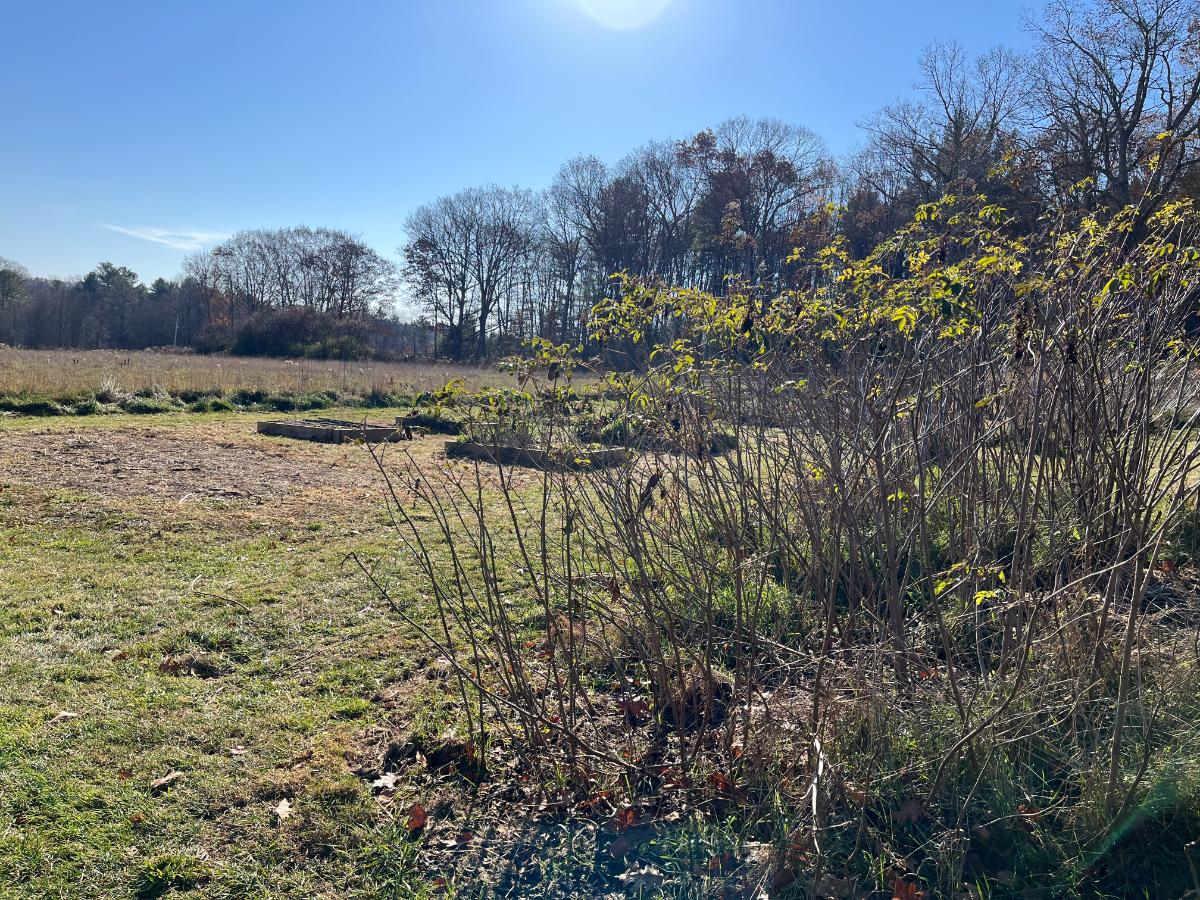
A good, thick layer of winter mulch is the best thing you can do to protect your young trees’ root systems and to give them a long life until they are big enough and established enough so that winter heaving is not an issue.
Why Mulch Fruit Trees for Winter?
Mulching vulnerable fruit trees for the winter serves a few important purposes. Winter mulching:
- Creates a consistent soil environment
- Keeps soil cold during freeze and thaw cycles
- Helps prevent heaving and winter kill
- Prevents the soil compaction that occurs with repeated freeze and thaw cycles
- Slows down the loss of ground moisture and keeps young roots from drying out
Consistent cold is needed to keep fruit trees in their dormant state. Big problems occur when trees are warmed, fooled into thinking it’s spring, and then freezing temperatures set back in.
Cold is not the enemy. Warm and cold cycles and fluctuating soil temperatures are. It’s important that your trees stay in a natural dormant state until the season truly turns.
When to Apply Winter Mulch to Fruit Trees
Winter mulch should not be applied until after the ground has frozen.
Wait to apply the mulch to your fruit trees until you have had at least one—and possibly a few—hard freezes. That way, the cold can get down into the ground, and then you can mulch to keep it there and keep things even.
If you apply your mulch too early, you’re not helping your fruit trees. You may be doing them more harm if you keep their roots warm and keep them thinking it’s still fall or spring.
Resist the urge to mulch early so you can get it over and done with. You really want the cold to get down into the ground.
How to Mulch Young Orchard Trees for Winter
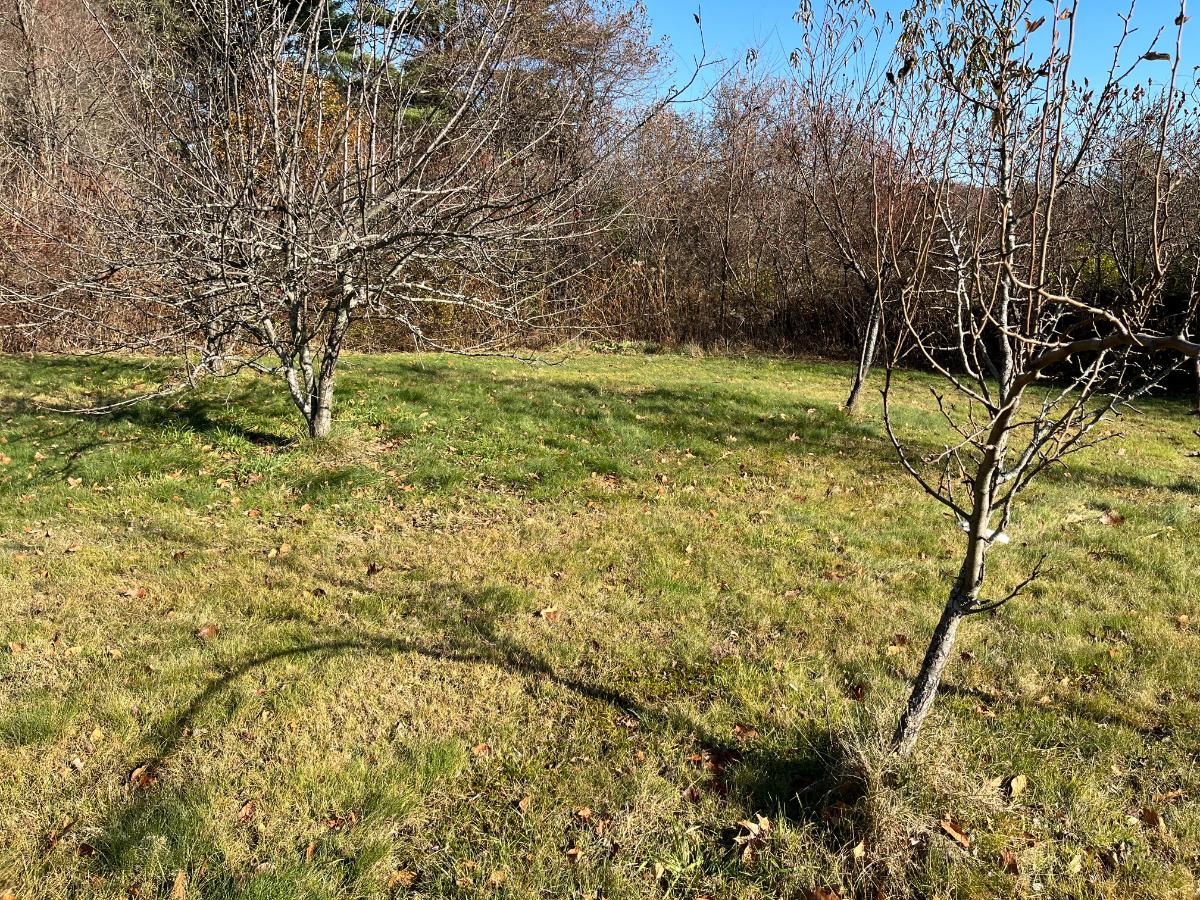
Winter mulch should be applied to the root area in a single thick layer.
- Apply a layer of mulch four to six inches deep
- Spread the mulch over the radius of the root zone
- The spread of the tree’s branches, where the drip line falls, is the approximate radius of its roots—so apply mulch to the area under the canopy of the tree
- Spread the mulch up to the hardware cloth protecting the trunk (this will also help anchor and seal the cloth to the ground)
What Type of Mulch Should You Use for Winter Mulch for Fruit Trees
Trees get the best protection from a nice, heavy mulch like wood chip or bark mulch. You can also use leaves or yard clippings, but you will need a lot, and they may be a bit light for the ground you’re covering.
A mix of leaves, pine needles, chopped plant stems (like corn or sunflowers), and a heavier material like wood chips would work, too.
When Spring Really Does Arrive
The added protection that got your trees through the winter can be problematic come spring.
Mulch that is too close to the trunk is not much of a problem in the winter, but in the spring, it needs to be pulled back so that the whole bottom of the trunk is open down to the soil line, with no mulch touching any bark or any part of the trunk.
Reduce and Pull Back Bark Mulch in the Spring
- Reduce the total layer of mulch to 3 inches deep
- Pull all mulch away from the base of the tree so there is a sort of “donut” shaped ring around the trunk
- If the mulch has rotted down to under four inches deep, you can leave the mulch in place and focus on pulling back mulch away from the trunk
- It is good to leave some mulch around the trees to reduce weed pressure
- Beneficial mycorrhizal networks (good fungal roots) that grow in wood chips and mulch increase the root structure and nutrient uptake in fruit trees and can increase and improve yields, so leaving some mulch in place is beneficial
Mulch that is piled too closely and touching the bark holds too much moisture on the bark. This causes rot and decay and invites fungal diseases to set in. It also promotes insect infestation.
Remove Hardware Cloth Wraps
Close wire can grow into trees and disrupt bark and wood growth. If it is too disruptive, it could kill the tree by creating wounds, openings for insects, and girdling the tree.
- Remove the hardware cloth ring from the tree in the spring when the mulch is pulled back
- If there is at least four to six inches between the wire and the trunk of the tree, the ring can remain in place, but you need to check regularly to make sure the wire has not shifted, isn’t touching, and the tree is not growing into the wire
- Hardware cloth rings can be saved to use again next year
Other Young Trees and Marginally Hardy Trees Can Benefit from the Same Treatment
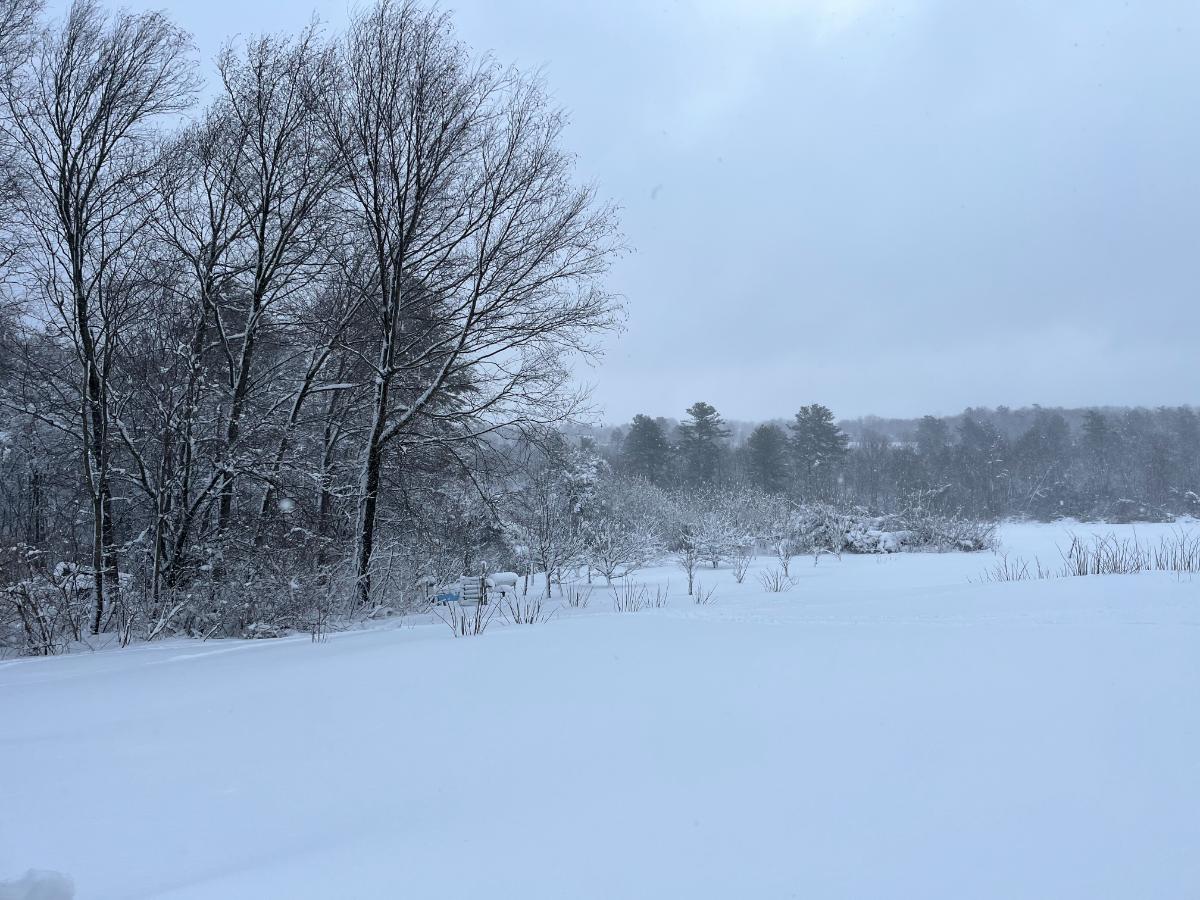
Trees are trees, and though our focus here has been on food-producing fruit and orchard trees, any young or newly planted tree can benefit from this same protection and same treatment—for the same reasons.
If you are growing trees or woody or herbaceous shrubs that are only marginally hardy for your area, they, too, should be treated similarly and mulched for the winter.
This will give those roots that are only barely capable of surviving your winter the added protection they need to survive in your colder, harder years. Heaving and root exposure is even worse for marginally hardy trees and shrubs.
By giving young trees added protection in the winter, you’ll help them weather the early years of growing. This results in stronger-rooted trees that live to see an old, productive age. More trees to love, more fruit to enjoy, and a happier, healthier home orchard!

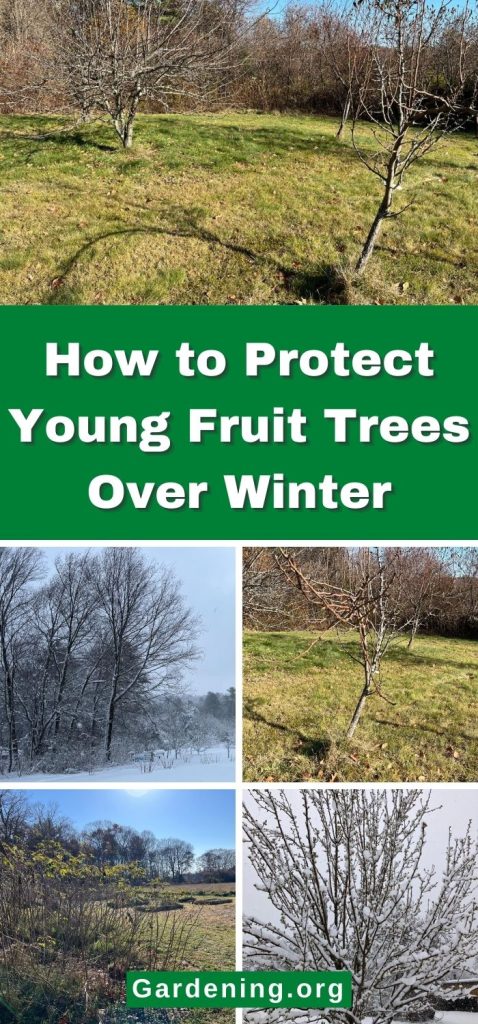

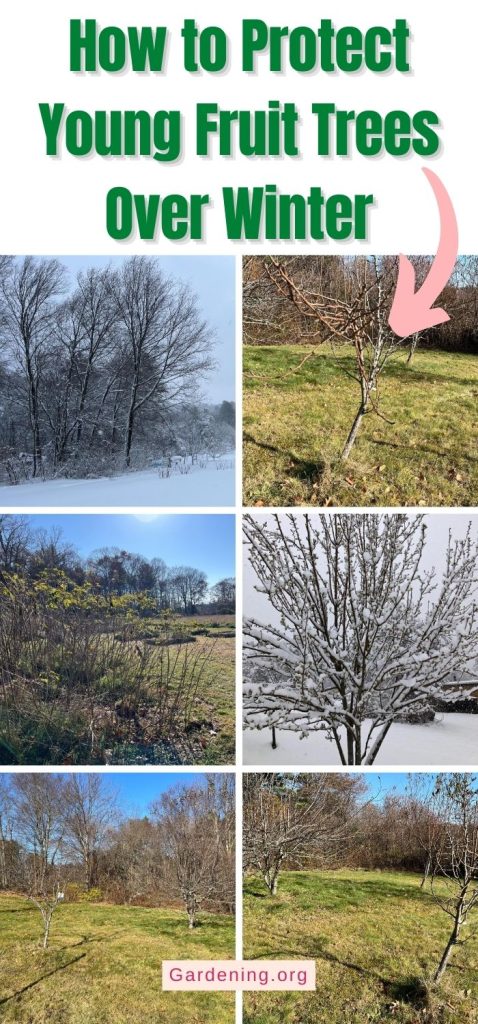
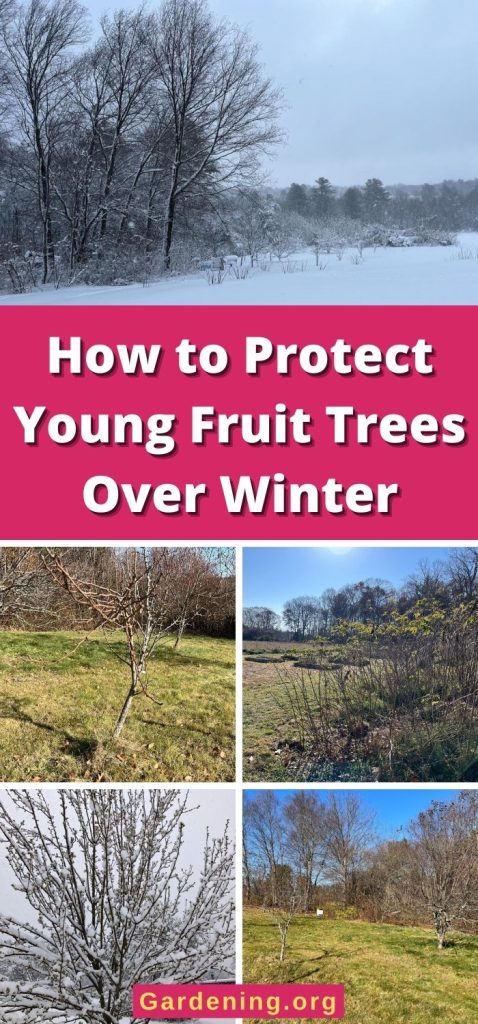
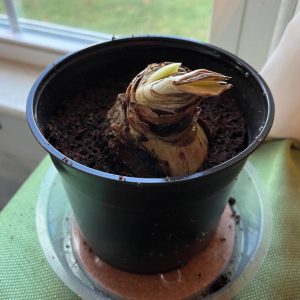
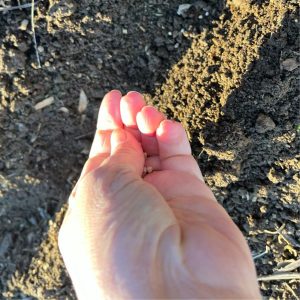
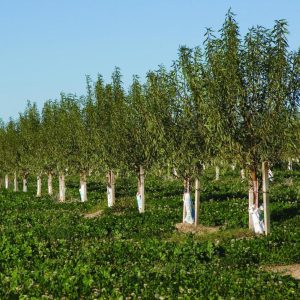
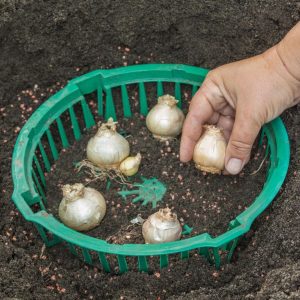
Fernando
Thank you very much more than information is an study.